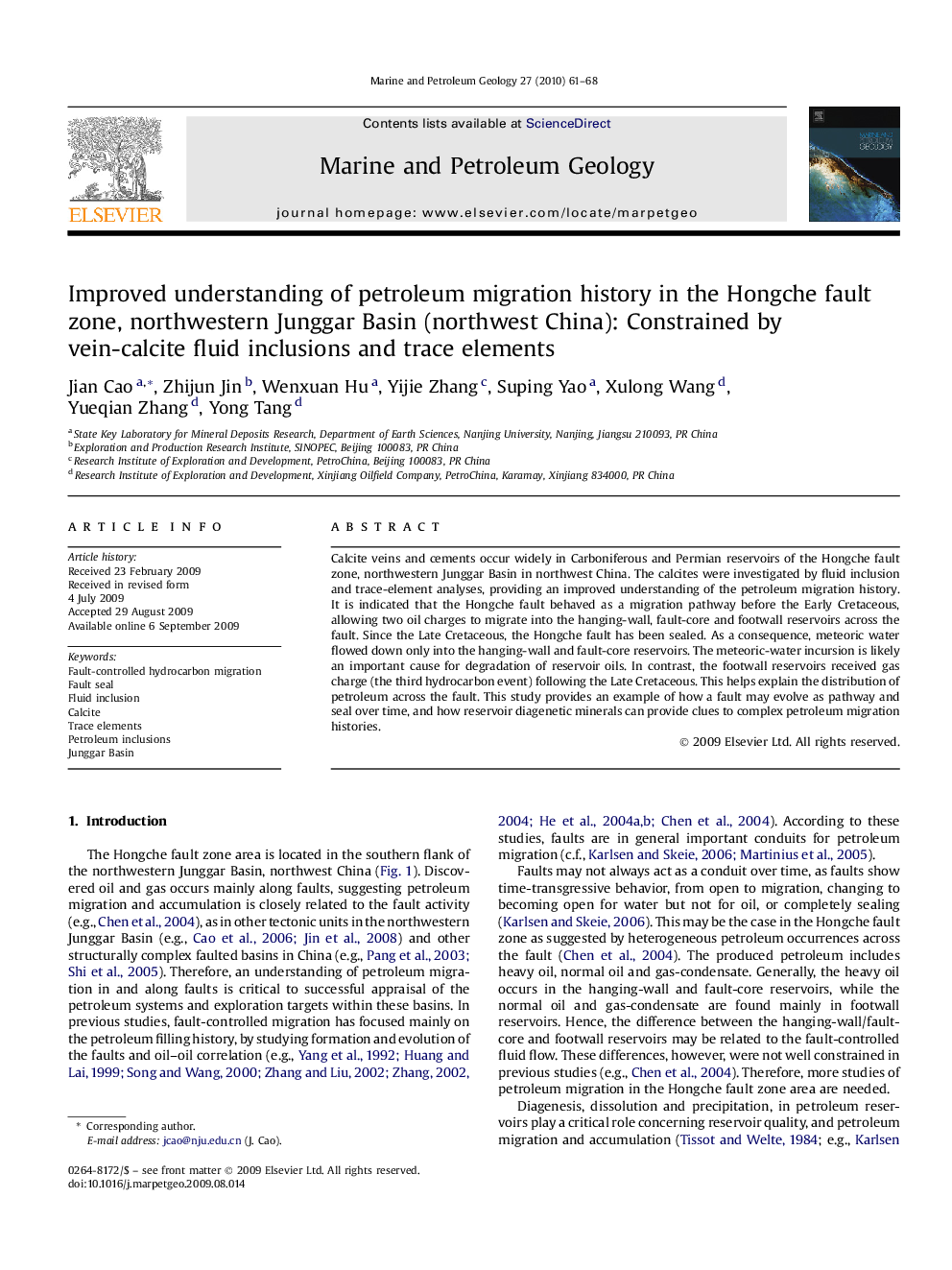| Article ID | Journal | Published Year | Pages | File Type |
|---|---|---|---|---|
| 4696239 | Marine and Petroleum Geology | 2010 | 8 Pages |
Calcite veins and cements occur widely in Carboniferous and Permian reservoirs of the Hongche fault zone, northwestern Junggar Basin in northwest China. The calcites were investigated by fluid inclusion and trace-element analyses, providing an improved understanding of the petroleum migration history. It is indicated that the Hongche fault behaved as a migration pathway before the Early Cretaceous, allowing two oil charges to migrate into the hanging-wall, fault-core and footwall reservoirs across the fault. Since the Late Cretaceous, the Hongche fault has been sealed. As a consequence, meteoric water flowed down only into the hanging-wall and fault-core reservoirs. The meteoric-water incursion is likely an important cause for degradation of reservoir oils. In contrast, the footwall reservoirs received gas charge (the third hydrocarbon event) following the Late Cretaceous. This helps explain the distribution of petroleum across the fault. This study provides an example of how a fault may evolve as pathway and seal over time, and how reservoir diagenetic minerals can provide clues to complex petroleum migration histories.
